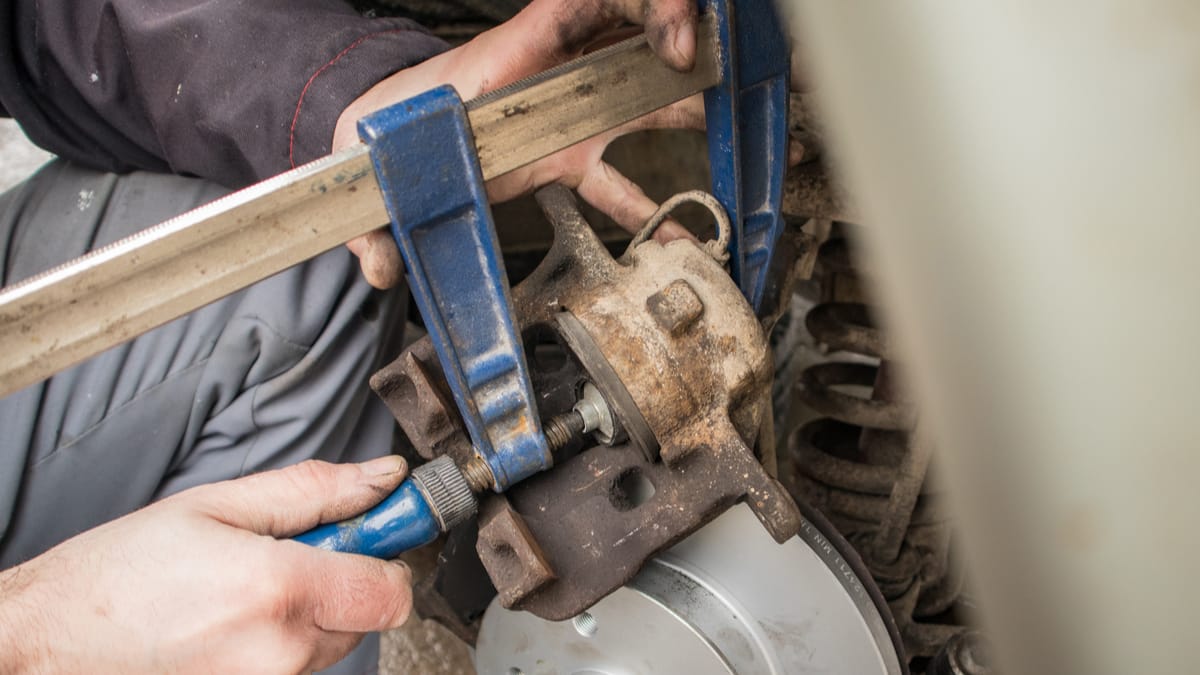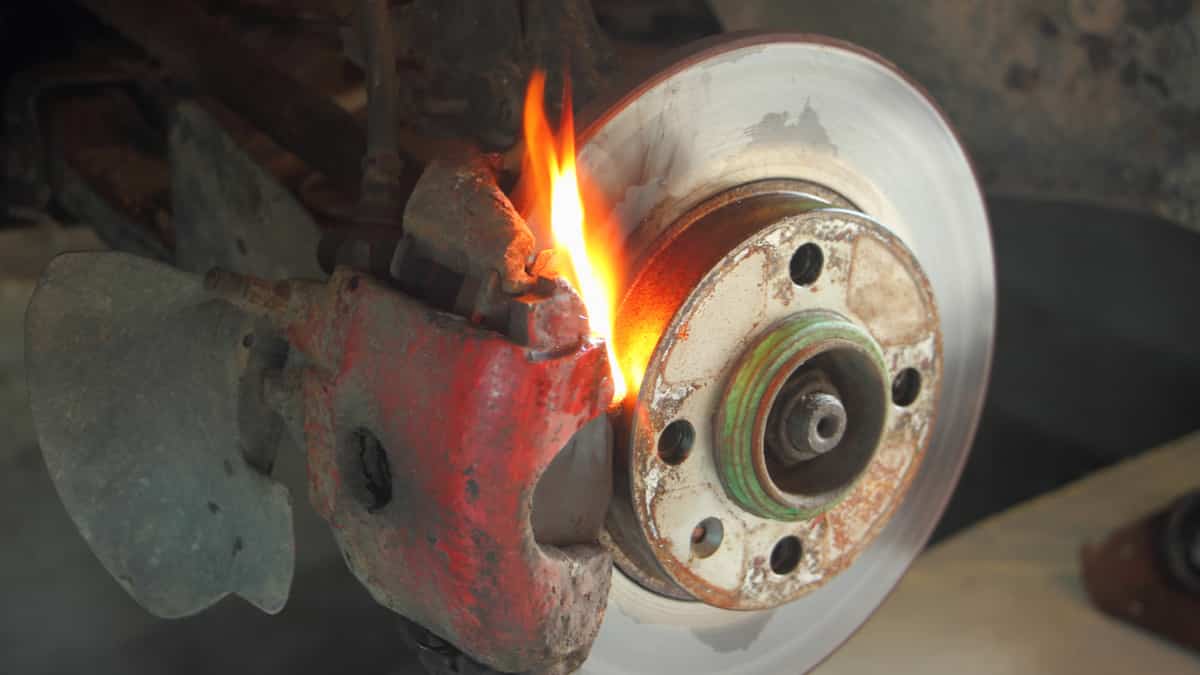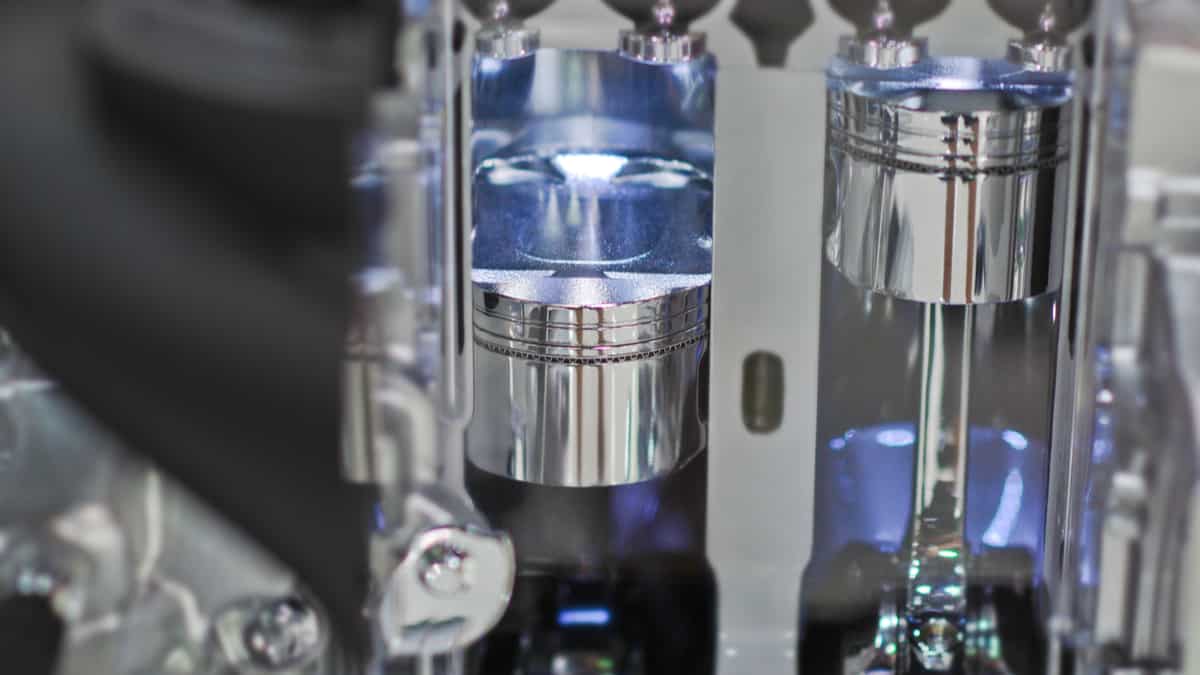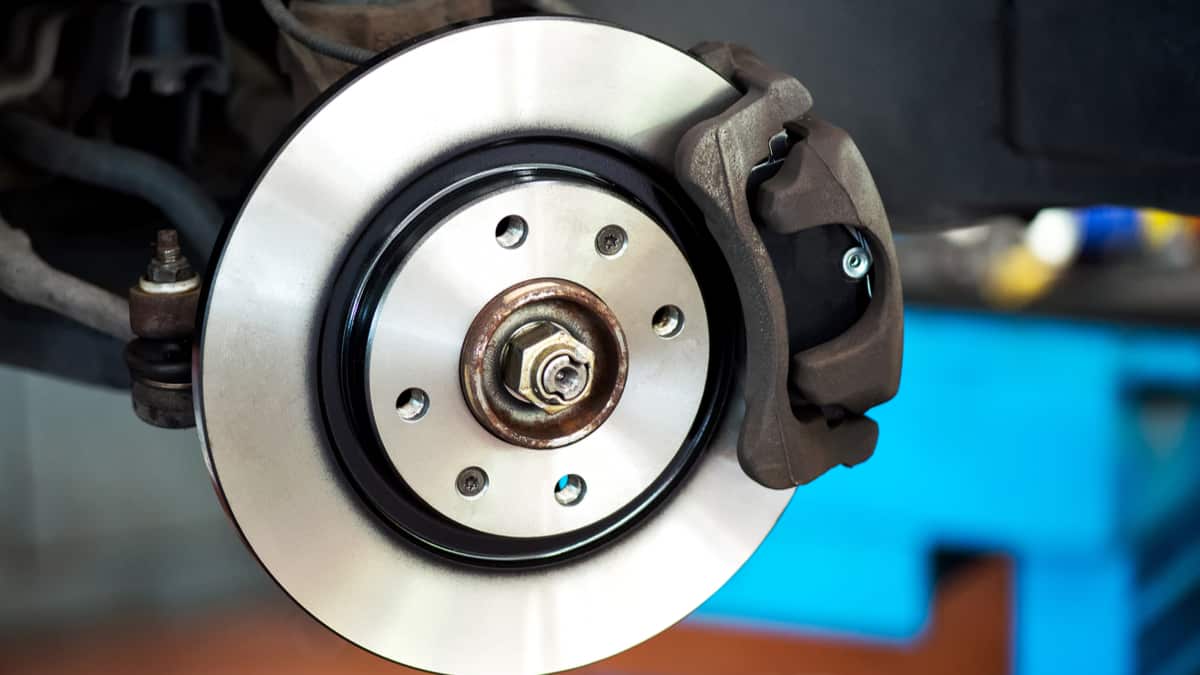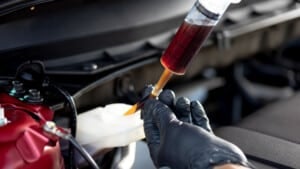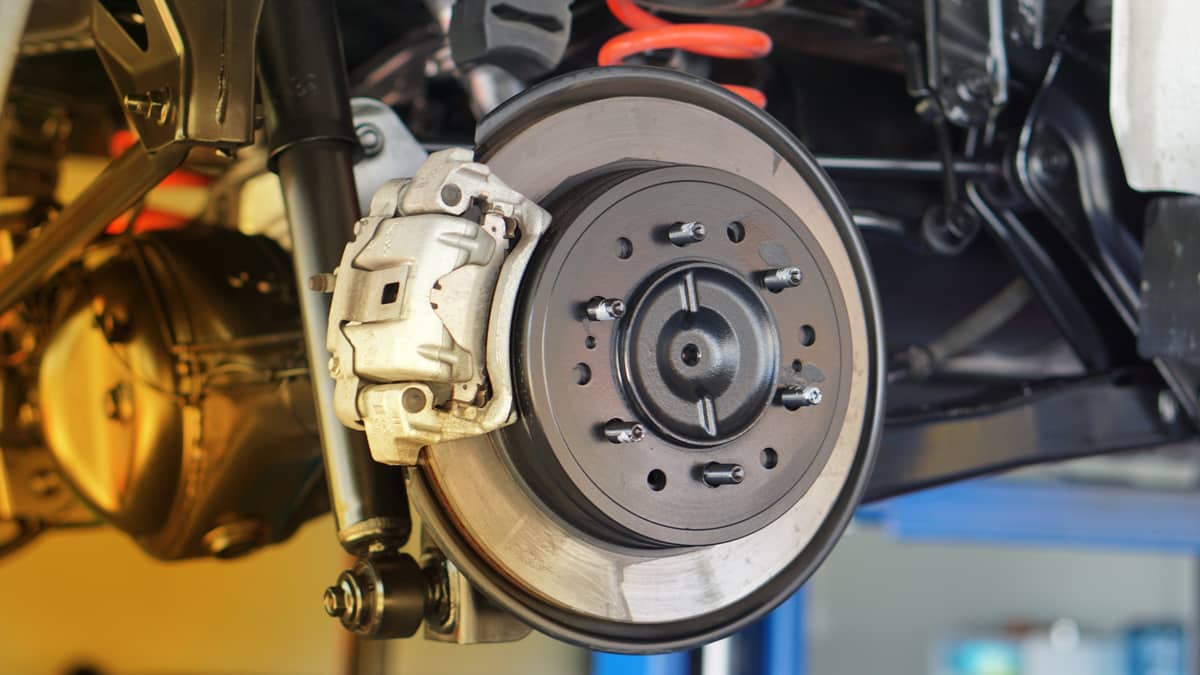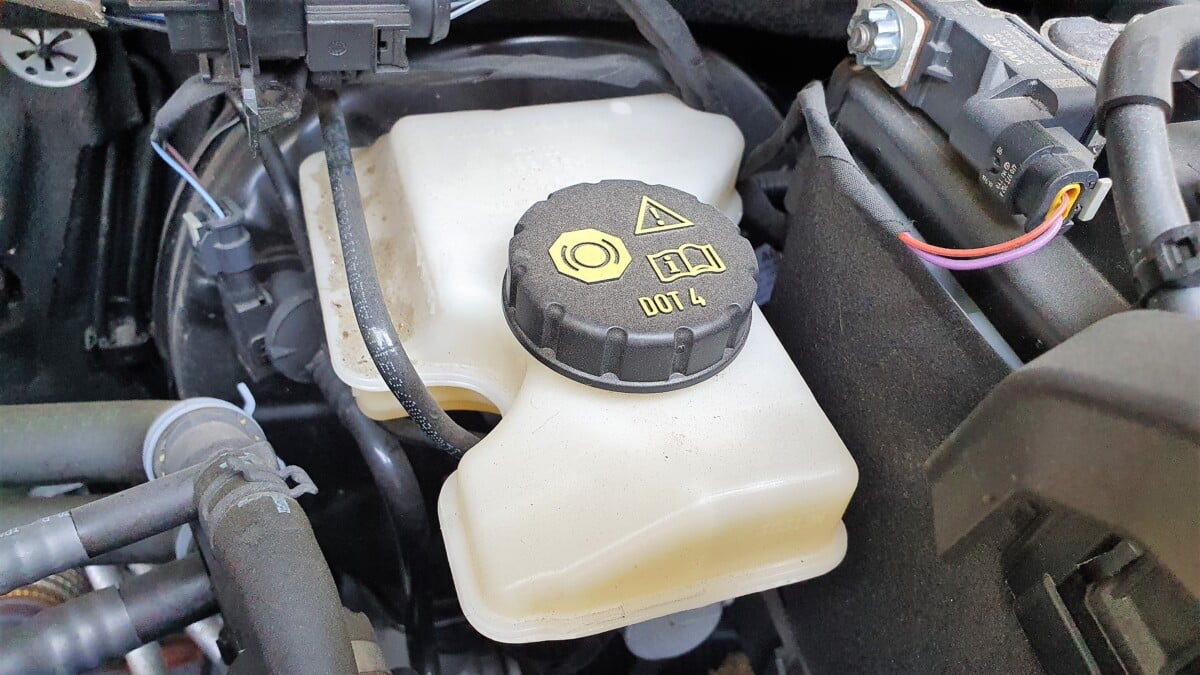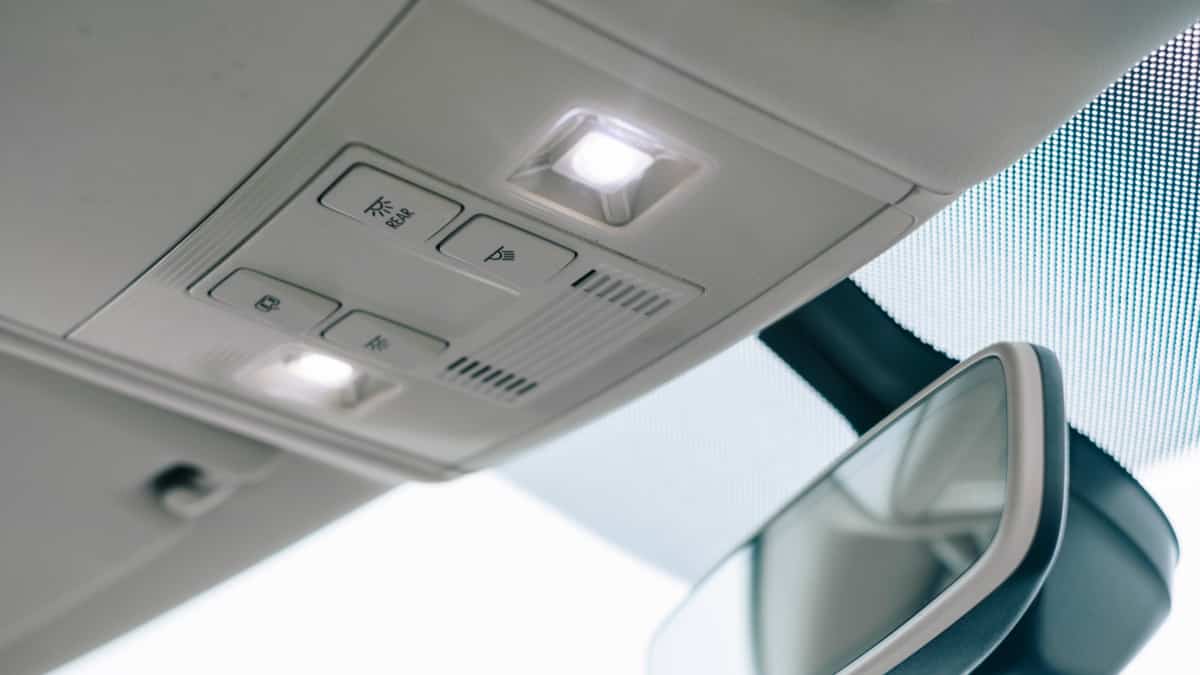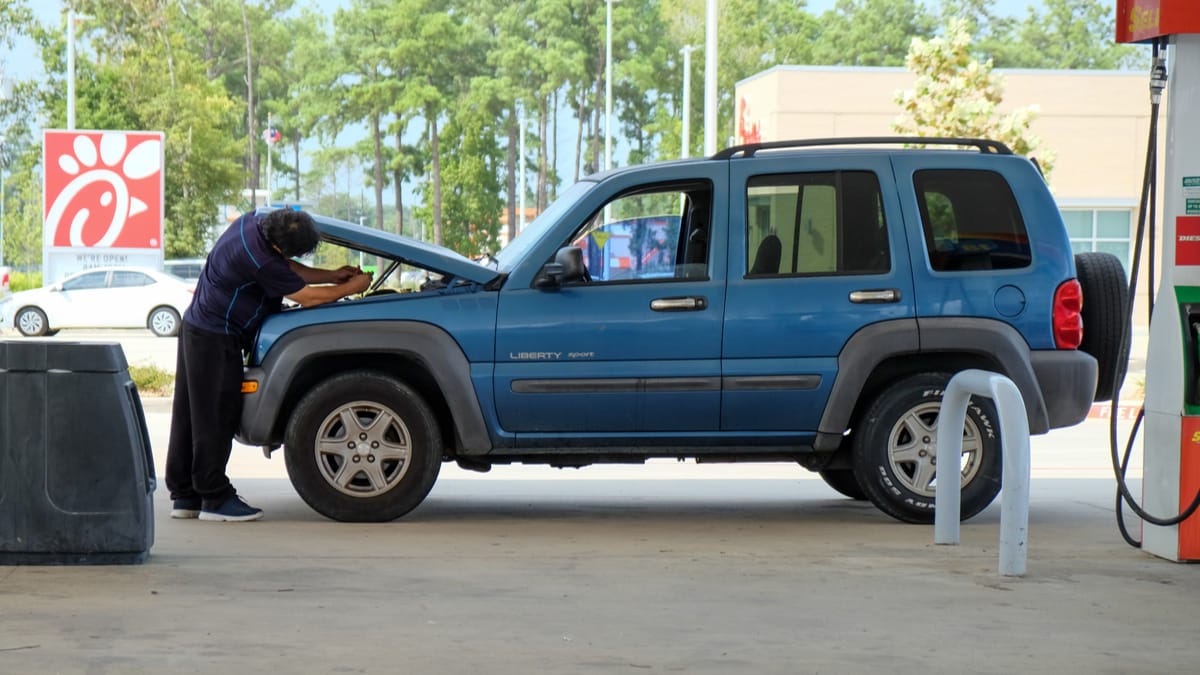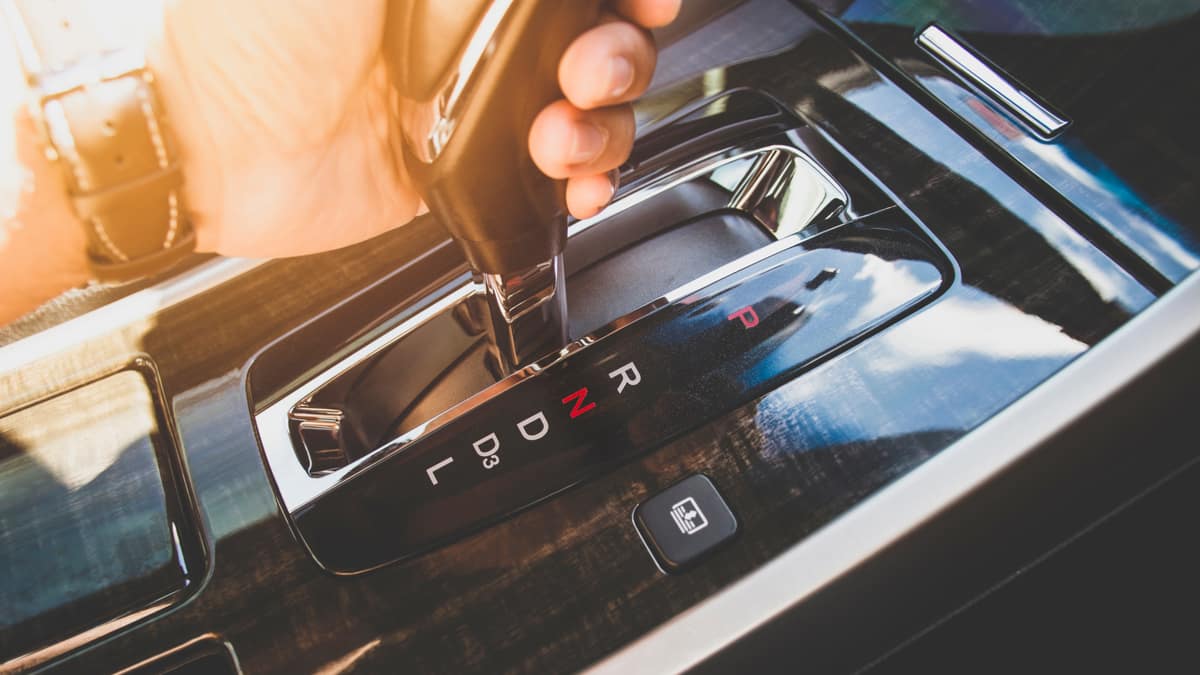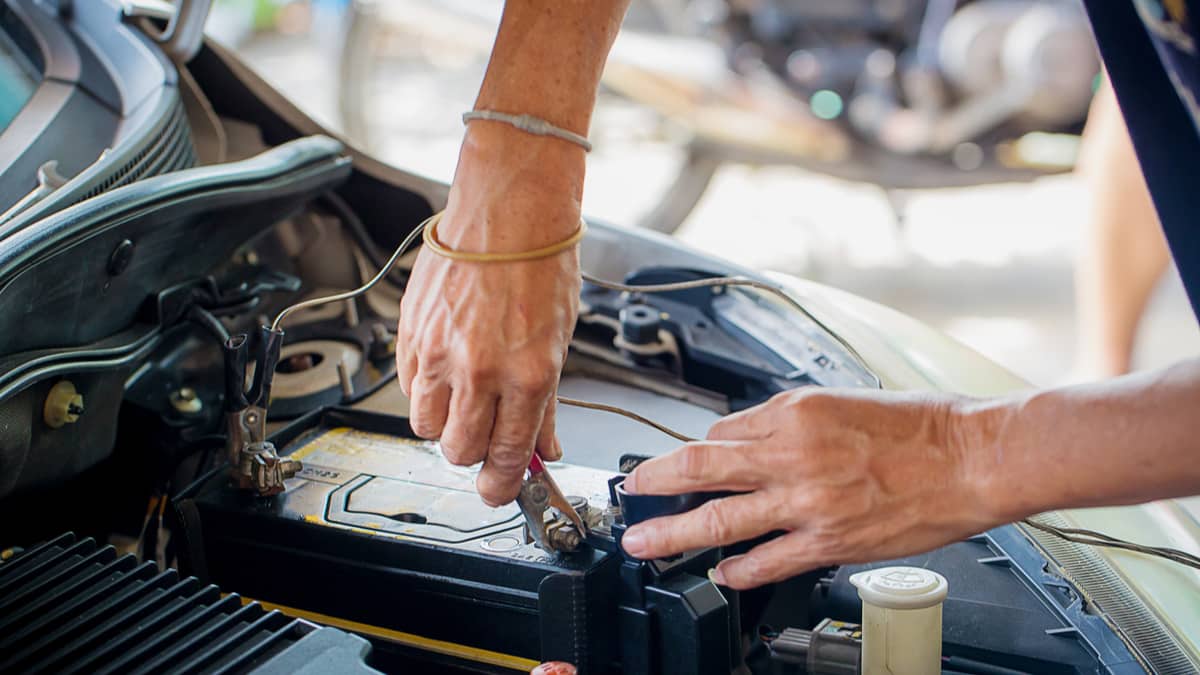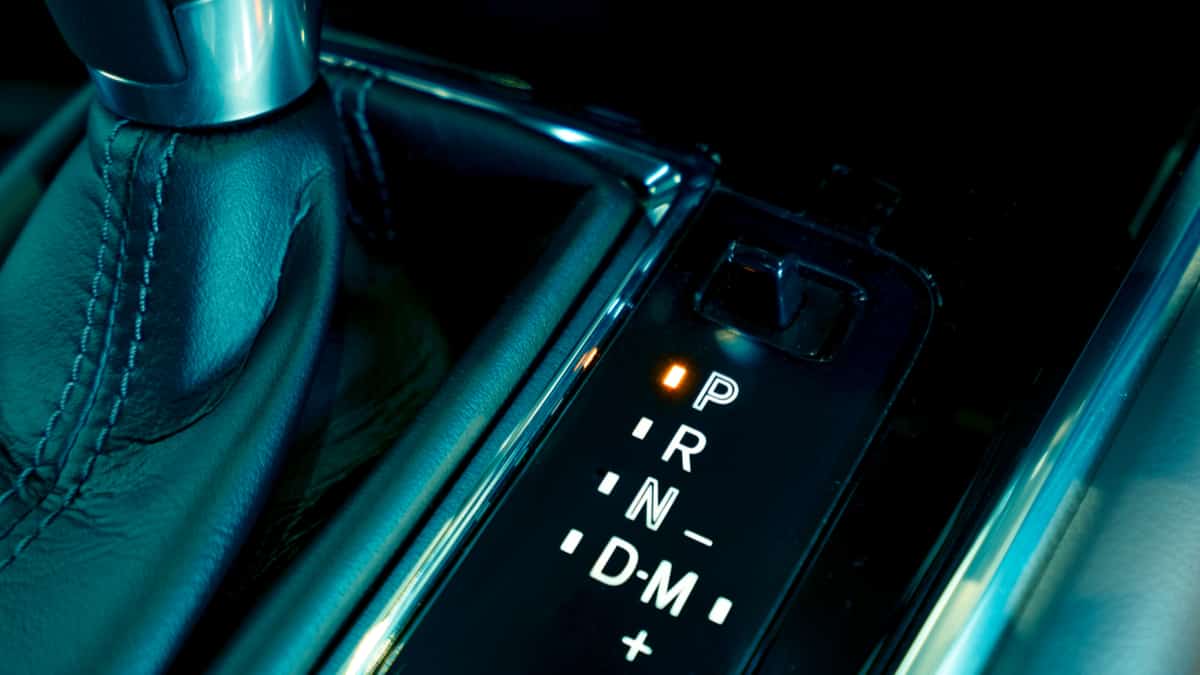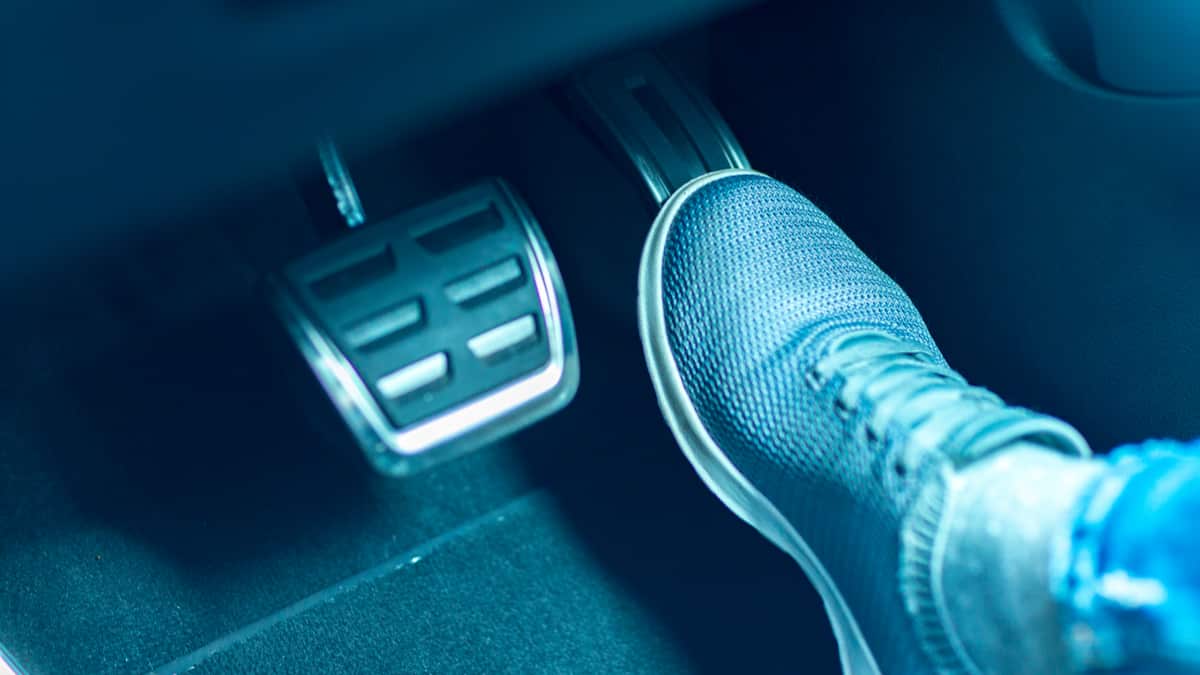The caliper piston is an essential part of the car’s braking system. If the caliper piston won’t compress, you will have serious braking issues. Why would this part seize and what can be done about it?
In this guide, we cover the top five causes of caliper piston issues. We also look at repairing or replacing the brake caliper, examine the approximate costs and show you how to compress them. Finally, you get a small section covering the most-asked caliper piston questions.
Reasons A Caliper Piston Won’t Compress
When the caliper piston doesn’t compress, it could be due to a corroded piston. Otherwise, there could be a worn piston boot or seal, or you have a collapsed brake hose. You may have performed an incorrect wind back procedure or the car has electric pistons that must be reset with a scan tool.
Here are a few things to look for if you are trying to get the caliper piston compressed.
1. Corroded Piston
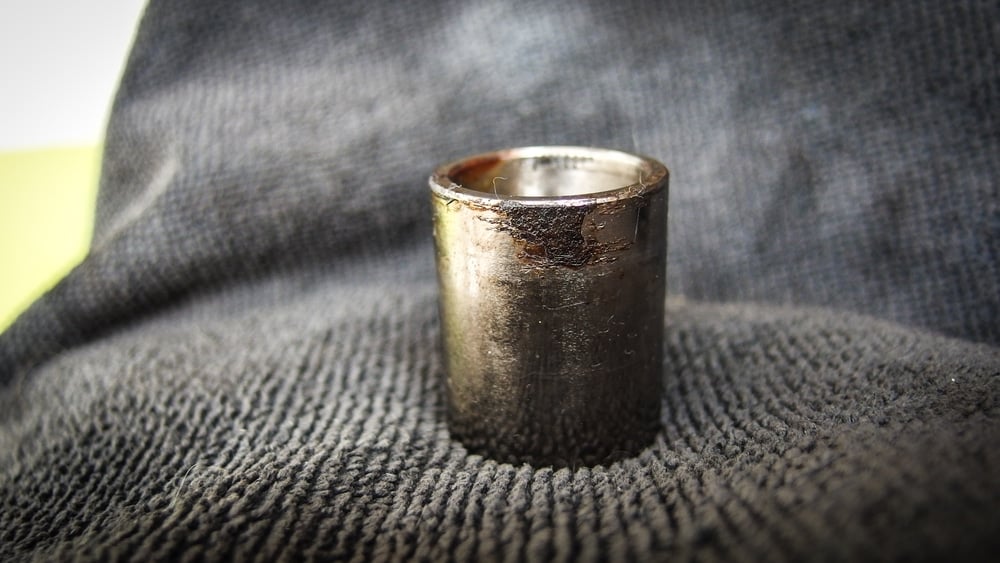
Because the piston is made from metal, it’s naturally susceptible to corrosion. If the caliper pistons become rusted or corroded, they may not function normally. This issue can also lead to a strange rubbing sound from the front wheels while driving.
The best way to prevent this is to keep the calipers clean and free from debris. You should check the calipers periodically and clean off any traces of rust, no matter how small it is. Additionally, continuing to use your vehicle regularly will prevent corrosion. If you plan to store your car for any amount of time, you have a higher chance of dealing with this problem.
RELATED: Brake Caliper Sticking (Causes & How to Prevent it)
2. Worn Piston Boot Or Seal
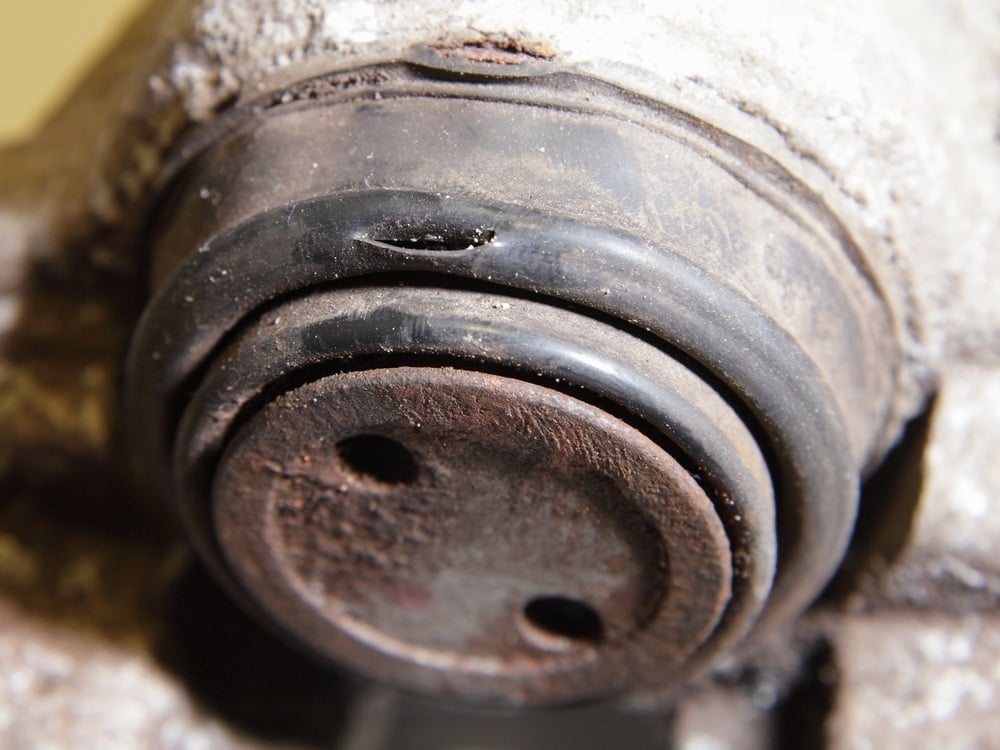
The pistons have seals on them to prevent leakage. Yet, these seals are also susceptible to wear and damage over time. When the rubber wears down, water can get into the piston, further leading to the corrosion issue.
With a broken seal, the piston can’t properly retract back into the housing. This situation keeps the brake pads in contact with the rotor, even if you aren’t pushing on the brake pedal.
3. Collapsed Brake Hose
Brake hoses are designed to carry the hydraulic fluid from the master cylinder to the calipers and back again. Contaminated fluid can cause the brake hoses to get damaged, which causes a collapsed brake hose.
With the fluid not able to travel back to the master cylinder, the brake caliper piston gets stuck. Sadly, you can’t tell that the hose has collapsed internally by looking at it. There usually isn’t any fluid leaking from it or other signs of wear. One of the ways to tell if a brake hose is collapsed is to open the bleeder valve and step on the pedal. If no fluid comes out, the internal construction of the hose may be damaged.
4. Incorrect Wind Back Procedure
With some brake systems, you need to use a special wind back tool to compress the pistons. If you don’t use the tool or you follow the wrong procedures, you may not be able to get the pistons retracted. For this reason, it’s always important to follow the advice laid out in the factory service manual.
Even if a wind-back tool isn’t necessary, it’s a huge timesaver. If you don’t have one, most auto parts stores are happy to rent them out to customers.
RELATED: How to Change Brake Pads With an Electric Parking Brake
5. Electric Rear Pistons Need A Reset With Scan Tool
You may have a code scanner to read engine trouble codes, but that’s not all the advanced models are good for. In fact, there are many features you probably aren’t aware of. For example, newer cars are outfitted with an electronic parking brake on the rear wheels. Very often, a compatible code scanner is needed to retract the caliper pistons with this setup.
The brakes need to be put into a special Service Mode before they will retract. While people claim to have ways to do it without the scan tool, we never recommend that. It’s best to follow the guidance of the manufacturer and use a code scanner to ensure everything works as it was intended.
Should You Repair Or Replace A Stuck Brake Caliper?
Every situation is different, so it’s difficult to give advice on this question. If you are able to compress the stuck pistons with one of our suggestions below, you may be able to skip over a replacement. Still, you should clean them off if they are sticky and try to get them working normally again.
There’s also the option to repair the caliper with new parts. However, this is a time-consuming method and it doesn’t save a lot of money in most cases. Instead of going through the hassle, it’s usually best to simply replace the brake caliper and gain the peace of mind you deserve from having a new part installed. After all, this is the essential braking system we are talking about.
Cost to Fix A Seized Caliper
To replace the brake caliper, you may need to spend $250 to $500, depending on the type of vehicle you drive and the cost of labor in your area. Parts cost about $100 to $300, so it’s much more cost-effective to replace the caliper yourself if you can.
However, if the stuck caliper is due to a different issue, such as a damaged hose, you may have a different repair cost. Get an estimate from a local service center to see what you are looking at.
How to Compress Stuck Caliper Pistons
There are a few different methods for compressing a stuck caliper piston. You could use a C-clamp, channel locks, a piston compression tool or a screwdriver. However, you shouldn’t try any of these methods if you don’t have experience.
Let’s look at your options closer.
1. C-Clamp
Most home workshops have a simple C-clamp on hand. If you have one, you can use it to compress the caliper piston. Here are some steps to try.
- Place the C-clamp over the caliper, reaching the end of the piston.
- Adjust the screw on top correctly.
- Use a piece of wood to shield the surface of the piston from damage.
- Turn the screw to increase the pressure. As it increases, the piston should compress.
- Continue to tighten it up until the piston is completely compressed.
Once you are finished, carefully remove the C-clamp from the caliper.
2. Channel Locks
If you don’t have success with the C-clamp, you could also try with a set of channel locks. The steps are very similar, except you want to place the channel locks with one side behind the pad and the other behind the caliper. The caliper and brake pad should be situated between the tool.
When you squeeze the channel locks, the piston should compress. Make sure you start off gently and increase the pressure as you need it. There’s no need to apply too much muscle.
3. Piston Compression Tool
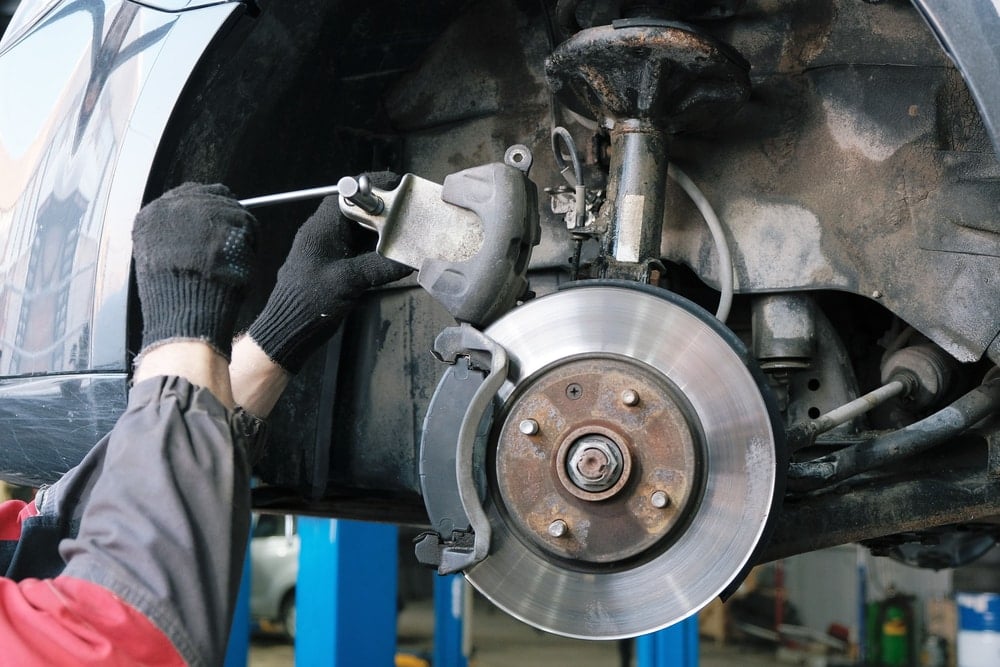
There are special compression tools that make working with pistons much easier and safer. While the designs of some tools look different, they all work with the same purpose.
The first step is to ensure that you have the correct adapters for this job. If it doesn’t fit correctly, you could damage the piston. Place the compressor around the caliper. Tighten the compressor until the piston starts to move back into the caliper. Continue this motion until the piston is fully compressed into the caliper.
4. Screwdriver
If you don’t have any of the other tools on hand, don’t overlook the value of a simple screwdriver. With this handy household tool, you may be able to get the caliper piston compressed.
Place your screwdriver in the caliper window. Make sure you hold it tightly as you put it in the openings. You want to apply an equal balance of force. During the pulling motion, the brake piston may retract slightly.
Pull back more on the screwdriver with firm pressure. You want to push against the pad in an outward motion. Now, you should be able to get the screwdriver between the brake pad and the piston. A gentle movement should be all that’s needed to finish retracting the piston.
How do you know if your caliper piston is seized?
When the caliper piston seizes, the car pulls to that side. It feels like you have the brakes applied, even with your foot off of the pedal. You may also hear grinding sounds or notice fluid leaking from the brakes. Have this fixed right away before it damages the brake pad and rotor.
Can I spray WD40 on the brake piston?
No, you should never use WD40 on your brakes. WD stands for water displacer and it’s a lightweight oil that evaporates quickly. It’s not a lube and it could leave some residue on the brakes. WD40 will ruin the performance of the brakes and can cause more problems than good.
How do you reset a caliper piston without a tool?
While having a caliper piston tool makes the job much easier, you don’t need one to compress the piston. Instead, you could use a C-clamp or channel locks. In a pinch, you may choose to use a screwdriver, which isn’t as simple to do but will work if you are in a jam.
Do I need to open the bleeder valve to compress the piston?
You can crack the bleeder valve open, but it’s not necessary to push the pistons in. The bleeder valve is used to get any trapped air out of the system. It doesn’t have a purpose in compressing the brake caliper pistons. You only need to open the valve when bleeding the brakes.
Can you compress the brake piston without bleeding?
Yes, you don’t need to bleed the system to compress the brake caliper. However, you want to top off the brake reservoir when you finish, to ensure there’s enough fluid in the system for the brakes to work correctly. Most professional mechanics don’t bleed the brakes to compress the piston.
There’s a serious issue when the caliper piston won’t compress. While it might be easy enough to fix, you need to figure it out before you continue driving. We recommend performing a complete inspection of the brake system and fixing whatever is wrong. Otherwise, you could allow further wear and damage to the vital braking system components.
If you aren’t familiar with the brakes, this isn’t a job meant for novices. We recommend taking your vehicle to a mechanic if you aren’t accustomed to changing brake pads and rotors, as the work will be similar.
Categories: Brakes, Troubleshooting
